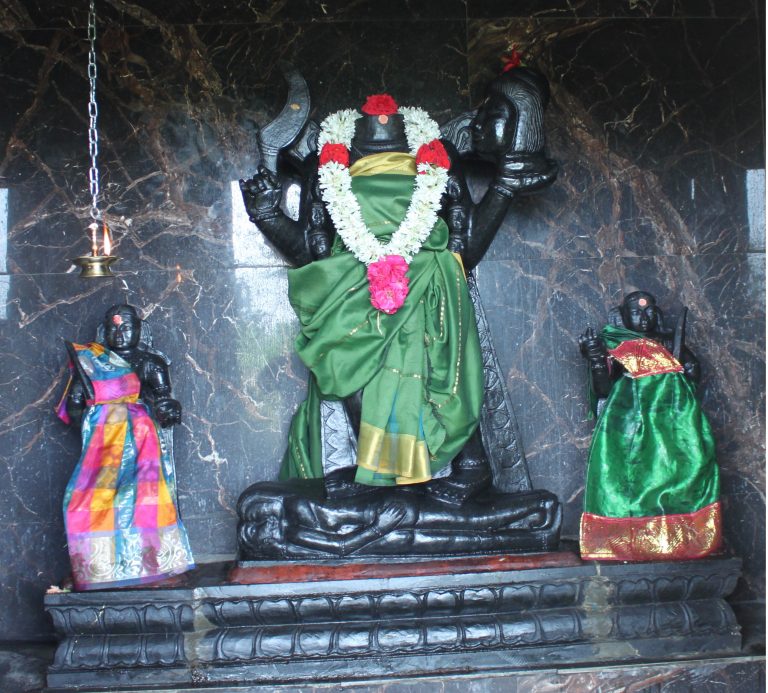
7. Chinnamasta
The self-decapitated Goddess. She chopped her own head off in order to satisfy Jaya and Vijaya (metaphors of Rajas and Tamas – part of the trigunas). Chinnamasta has a red complexion, embodied with a frightful appearance. She has disheveled hair. Since she cut her own head, she is known as Chinnamasta. Chinnamasta shines like a lightning bolt from the Sun. She demonstrates the rare courage needed to make the highest conceivable sacrifice. The severed head, iconographically, symbolizes liberation. Each person’s individual identity is a state of conditioning or limitation, dependent on qualities. By severing the head, the Mother reveals herself in her true being, which is unconditioned, infinite, and boundlessly free. Because she is infinite, she is also autonomous. Dakini, on the left, is black; Varnini, on the right, is red. Chinnamasta, in the middle, is white. Black, red, and white represent the three gunas, or basic universal energies. Sattva, symbolized by Chinnamasta’s whiteness, is the highest of the gunas, of course, but all three belong to prakriti, the principle of materiality on which all nature rests. Nothing exists apart from the Mother, whose power of diversification takes form as the grand display of the universe. The blood spurting from Chinnamasta’s neck represents the life force (prana) or cosmic energy that animates the universe and sustains all life. The first stream flows into Chinnamasta’s own mouth. She is self-existent and dependent on no other. The streams that flow into the mouths of her attendants represent the life-force in all living creatures.